I may get commissions for purchases made through links in this post.
There are all sorts of reasons people want to go off-grid, from political convictions to a hunger for independence. There have been a variety of different books written about homesteading and self-sufficiency: some are filled with practical information, others are just soft-focus lifestyle porn.
Everyone likes the idea of making jam and raising chickens; tasks like digging your own latrine are less appealing, and there’s a lot of scope to go wrong when you’re doing it alone.
Whether you’re stuck in an office while you plan for the future, or already living the dream, these books will talk you through the practical aspects of self-sufficient living. From practical advice on growing food and preparing it, to building your own self-sufficient house, these books are the best you can get.
1. The Encyclopedia of Country Living
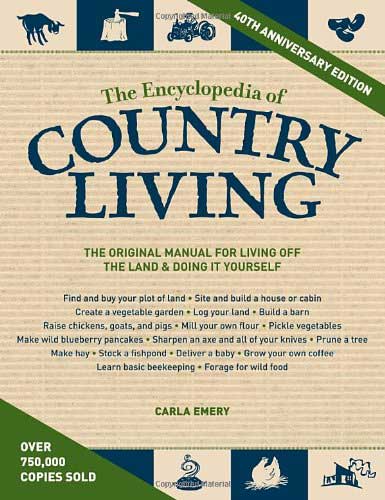 This classic door-stopper of a book covers everything from buying land to canning peaches. The author, Carla Emery, was a born-and-bred farmer who started writing the book in the early 1970s in response to the growing back-to-the-land movement.
This classic door-stopper of a book covers everything from buying land to canning peaches. The author, Carla Emery, was a born-and-bred farmer who started writing the book in the early 1970s in response to the growing back-to-the-land movement.
The volume has been updated every few years since, and is now an invaluable bank of skills which were once handed down only by word of mouth.
Despite its old-fashioned roots, this book is totally up-to-date: the newest editions come with web links for further information, handy in the ebook version.
Due to the sheer scope of the 900-page book, some of the articles are less detailed than you might find on a specialist website, but most come with recommendations for further reading if you need more detail.
City dwellers might never need to skin a rabbit or deliver a calf (unless they practice urban self reliance), but many of the tips on gardening and cooking will work anywhere.
For those considering an off-grid lifestyle, this is a helpful insight into the pleasures and struggles of rural life. Emery’s friendly yet authoritative tone shines through on every page, meaning this is not just an invaluable reference work but a pleasure to read.
Pros: a wealth of information for anyone with the urge of going back to basics.
Cons: Because it offers such a wide variety of subjects you will have to read more specific sources to become a true expert.
Grab your copy here.
2 .Twelve by Twelve: A One-Room Cabin Off the Grid and Beyond the American Dream
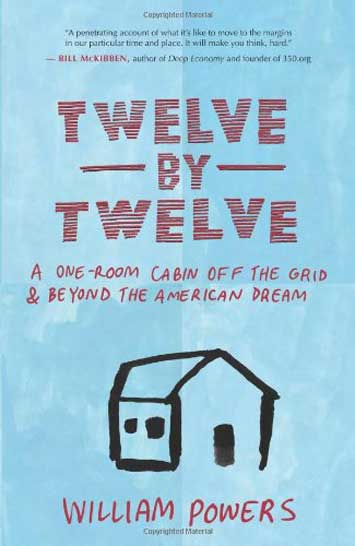
Twelve by Twelve is an intimate memoir of a season spent living in a one-room shack, without running water or electricity. Dr Jackie Benton, a successful physician turned permaculture pioneer, lent her remote house to the author William Powers for a season.
The book follows Powers as he showers in rainwater, kills his own dinner, and meets the locals.
Powers looks at the emotional and spiritual impact of an off-grid lifestyle, rather than the nuts-and-bolts practicalities. He had returned from a decade of gruelling overseas aid work shortly before his time in the cabin, and felt overwhelmed by the consumerist attitudes he found on his return to America; the cabin acted like a quarantine zone, shielding him from the ugliest aspects of modern life while he thought about his place in the world.
The book focuses on Powers’ struggle to find inner peace through a downsized lifestyle. While still retaining the easy-to-read tone of a memoir, it also examines the larger social and political issues at stake, from tax funding of the military to the significance of class in the downsizing movement.
Good to know: This book is more about the inner dialogue, the inital restlessness and disillusion as well as the emotional journey of the writer than that it is a practical guide on how to go off-grid.
The LA Times:
The beauty of the book lies in Powers’ generous intimacy — we watch him rethink his entire approach; we watch him relax into himself, become himself, carve himself out of a dream that was not his own. Like the other books, “Twelve by Twelve” makes a huge bow to Thoreau, but it is a far more spiritual, even naïve book (in the most gentle meaning of the word) than the others.
Find out more here.
3. Back to Basics: A Complete Guide to Traditional Skills
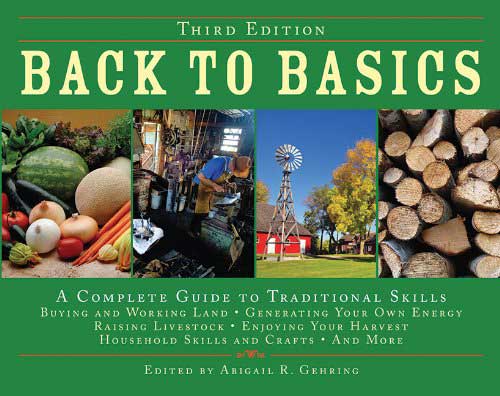 ‘Back to Basics’ contains all the information you’ll need to become a totally independent homesteader. It contains plenty of useful information on things like growing food and raising chickens; but it really distinguishes itself by the chapters on building.
‘Back to Basics’ contains all the information you’ll need to become a totally independent homesteader. It contains plenty of useful information on things like growing food and raising chickens; but it really distinguishes itself by the chapters on building.
Covering everything from sewage systems to blacksmithing, this book shows you how to build a house from the foundations upwards.
The book covers many of the same topics as the Encyclopaedia of Country Living, but with the addition of colour photographs and clear step-by-step instructions for many tasks.
The illustrations add helpful detail for beginners. The glossy pages make the book a fun read for those who are still stuck in the city planning their downsizing adventure, yet it’s still detailed enough to be a useful resource for a lifelong country dweller.
Many homesteading books contain a strong political message, but this one keeps a deliberately neutral and factual tone. Anyone who is interested in history should seek this book out, as it provides a detailed breakdown of the sort of tasks which were once everyday skills and have long since been lost.
From growing produce, raising animals, to building, to conserving to preserving, to cooking. From knitting, quilting, knots, herbs, recreation, cider, beer, candle and soap making, and blacksmithing. Oh, not to forget, beer and wine making.
Pros and cons: book provides an excellent overview of a wide range of aspects of a self-reliant lifestyle. As such it’s not able to get too much into the weeds.
Start learning basic living skills here.
4. DIY Projects for the Self-Sufficient Homeowner: 25 Ways to Build a Self-Reliant Lifestyle
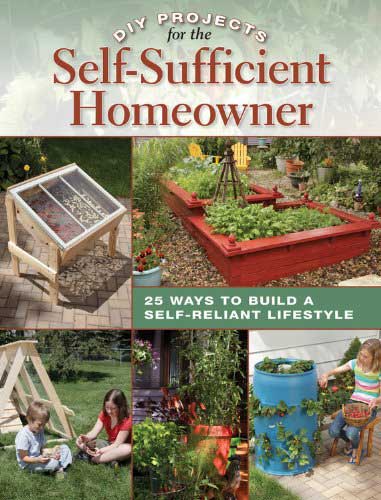
When you’re living from paycheque to paycheque, the idea of homesteading seems both inviting and impossible. However tempting the idea, it’s a big leap to go from the rat race to the great outdoors.
This book, with its practical tips and encouraging tone, is aimed at those who like the idea of becoming more self-sufficient but aren’t able to overhaul their whole way of life.
The 25 DIY projects cover off-grid staples like collecting water and composting, interwoven with a wealth of practical tips on everything from root cellars to solar power.
All the ideas will work in a suburban garden as well as they would on a farm; many of the tips are even suitable for apartment dwellers. It’s particularly good on projects for collecting your own food, such as building chicken runs or raised planters.
Each project is given 2-4 pages, with instructions detailed enough that someone who’s never picked up a hammer can easily knock together an A-frame greenhouse.
Pros and cons: this is an invaluable resource for the beginning homesteader and backyard gardener but the projects are rather basic. The more advanced self-sufficient homeowner who wants to build a solar oven or potty will be better off with another book.
Read more reviews.
5. Off Grid Living: 25 Lessons on How to Live off The Grid and Survive in the Wild
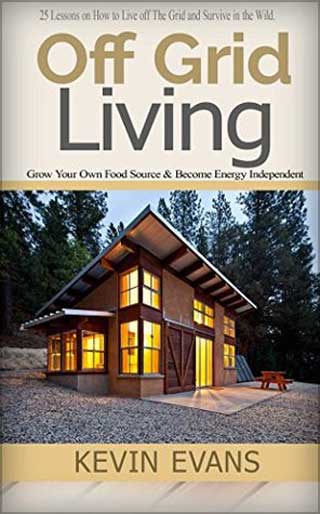 Most of the typical ‘off grid living books’ are not the best. Books focused on DIY, traditional skills and homesteading offer better assistance. Off Grid Living by Kevin Evans is an exception.
Most of the typical ‘off grid living books’ are not the best. Books focused on DIY, traditional skills and homesteading offer better assistance. Off Grid Living by Kevin Evans is an exception.
The books offers an overall view of what off grid living entails. In a very practical way, the author shines a light onto various ways you and I could live this lifestyle.
The ‘hardcore preaching’ style can be offputting to many and this book approaches the matter differently. It gently suggests different levels of commitment to this way of life.
It recognizes the fact that other family members might not share your passions while addressing the pros and cons of actually living off the grid. The author gives answers to questions about the required lifestyle changes.
It shows you how to generate independent energy, basic survival skills, grow your own food, store and conserve water and food items and many other aspects of living off the grid.
Good to know.This book is a must-read for those who are merely curious about living off the grid to those who already made the decision. It covers what the lifestyle entails and how those back-to-the-landers do it. It both offers practical tips as well as tips for mental preparation.
Check it out here.
6 . Mini Farming: Self-Sufficiency on 1/4 Acre
 Self-sufficiency is not only for country dwellers. This book shows you how to intensify your home growing to produce almost everything you need from your garden.
Self-sufficiency is not only for country dwellers. This book shows you how to intensify your home growing to produce almost everything you need from your garden.
Author Brett Markham works full-time as an engineer and only gardens in his spare time, yet manages to produce enough food to feed his whole family. With careful use of trellising and raised beds, he estimates that a quarter-acre plot (about 31m by 31m) can produce 85% of the food needed by a family of four.
Markham’s book takes a scientific approach to maximising production, with a whole chapter on the nutrients different plants need to grow. He not only tells you why potash might benefit your soil, but also includes detailed charts showing exactly how much to use under different conditions.
Done incorrectly, intensive agriculture can lead to soil depletion and pest infestations, so there are chapters on crop rotation, pest control, and fertilisation.
The book’s main focus is on growing fruit and vegetables, but there are helpful chapters on raising chickens and home preservation, as well as how to sell your produce at market.
Though the charts and graphs mean it’s not always an easy read, Markham’s book is an invaluable resource for city dwellers interested in becoming more independent.
Good to know: One of the best on mini-farming, gardening, and food self-sufficiency.
Get your ticket to a more independent life here.
7. Earth-Sheltered Houses: How To Build An Affordable Underground Home
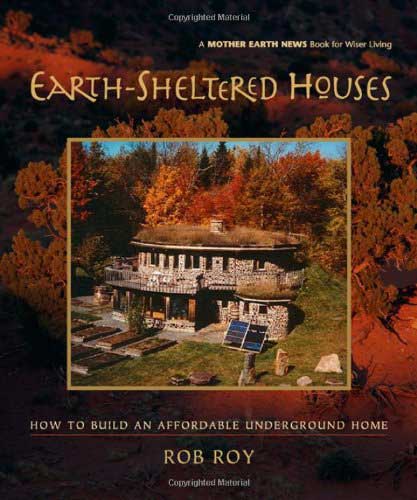 For those off-the-grid homemakers that are looking for a more environmentally-friendly living situation, Earth-Sheltered Houses by Rob Roy is one of the best how-to guides for secluded, earth-friendly living.
For those off-the-grid homemakers that are looking for a more environmentally-friendly living situation, Earth-Sheltered Houses by Rob Roy is one of the best how-to guides for secluded, earth-friendly living.
This book distinguishes itself from other earth-sheltered building books because it advocates using modern, longer-lasting materials in lieu of the hardcore ‘straw bale home’ type books.
Focusing on underground housing and earth-covered rooftops, the author, based on his own experiences with building an earth-sheltered house, makes it easy to understand the ins and outs of building your next underground home.
Earth-Sheltered Houses includes simple-to-read diagrams and step-by-step instructions on how to get the basics of house building done. Not sure how to install insulation or waterproof your home? Roy’s book lets even the bare bones beginner accomplish these tasks and more, all at a fraction of the cost of what buying a typical home would be.
Although the book does not include installation instructions for electricity and plumbing, it does tell the builder how to install and use more eco-friendly options such as solar energy and other natural energy sources.
Whether you worry about peak oil or are just enthused by construction methods of the future, this book, with its rock-solid advice, has got it all. It’s not a coffee table book with nice pictures to dream away, it’s a highly practical guide with plans and technical advice.
The only thing to keep in mind, like many books in its kind, building code advice and tips on location issues are not addressed in-depth.
Ready to go underground? Grab your copy here.
8. Earthship: How to Build Your Own
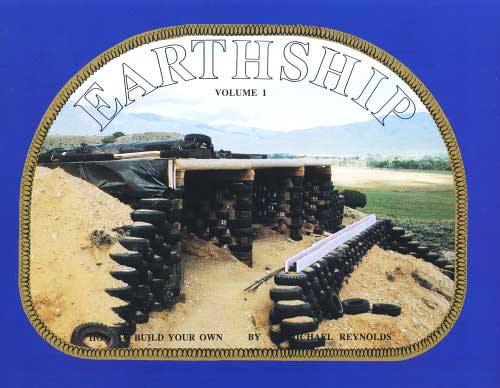 If you’re looking to build an earth-friendly, self-sustaining home that provides for it’s own heating, cooling, power, sewage, food and water needs, Michael Reynold’s Earthship series is an essential guide to help you get started.
If you’re looking to build an earth-friendly, self-sustaining home that provides for it’s own heating, cooling, power, sewage, food and water needs, Michael Reynold’s Earthship series is an essential guide to help you get started.
Though it was written in the 1990s, much of Reynold’s book consists of a solid foundation of knowledge with building principles that still hold true today.
Reynold discusses these time-tested methods by first explaining the history behind Earthships, homes built from spare materials most people would never think to use, such as aluminum cans, old tires and mud (there’s even an Earthship made entirely of old aluminum beer cans!)
By recycling these materials and using them to create a sustainable, eco-friendly dwelling, the sincere environmentalist is able to live a more responsible lifestyle in harmony with the world around them.
Even if you’re not seriously thinking of building your own Earthship, Reynold’s book still provides a good knowledge base for ways to improve your lifestyle to help better yourself and protect the planet.
This book isn’t a glossy tome, chock-full with color photos designed to let you drool at the beautiful, alien-like designs. It’s about the genesis of the concept “earthship”, about the structure, the philosphy behind it, and why these homes work and how to actually build such a self-contained house.
Be warned, after reading this book you will found yourself hoarding tin food cans, empty glass jars and other trash.
More info on Amazon. If you’re new to Earthships, watch documentary #8 here.
9. The Solar House: Passive Heating and Cooling
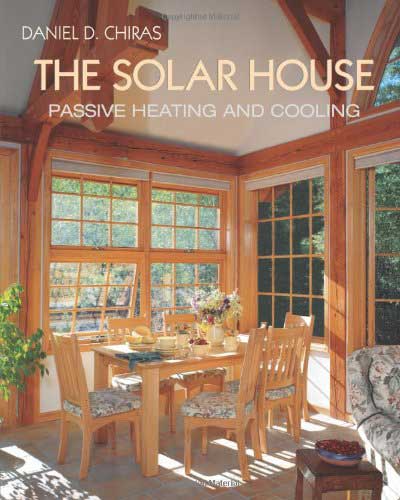 If you’re a homeowner, there have been times where you’ve looked over your utility bills and despaired at the rising expense of heating and cooling your home. Fortunately for you, author Daniel D. Chiras has written a book entitled The Solar House: Passive Heating and Cooling specifically with you in mind.
If you’re a homeowner, there have been times where you’ve looked over your utility bills and despaired at the rising expense of heating and cooling your home. Fortunately for you, author Daniel D. Chiras has written a book entitled The Solar House: Passive Heating and Cooling specifically with you in mind.
Passive heating and cooling uses the energy sources around us that nature provides to keep your home at the right temperature by using sunlight to heat your home in the winter, and harnessing the wind to keep you cool in the warmer months.
Chiras covers the history of passive heating and cooling and carefully explains why previous experiments with this method, most of which took place in the 1970s, haven’t worked.
By acknowledging these mistakes, Chiras is able to point out simple errors that future builders can avoid in order to get the most out of their solar home, even going so far as to include a pros/cons list at the end of each section detailing a particular system.
The book guides you from the start during site selection all the way to radiant floor heating and back up heating systems.
Good to know, this book will save you a lot of money in heating and cooling costs. If you haven’t got the planto build an energy-efficient home yet you will have after reading this gem of a book.
Pick up this easy to use architectural guide.
Featured image: Wikimedia Commons.


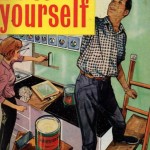



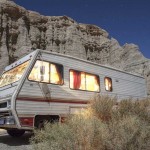
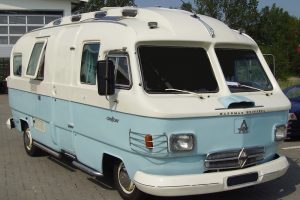


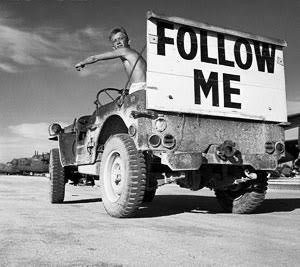
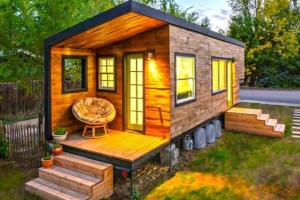
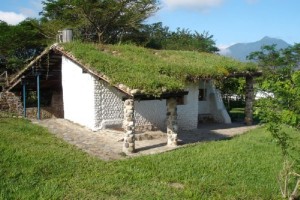
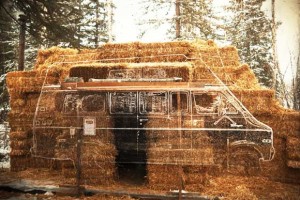

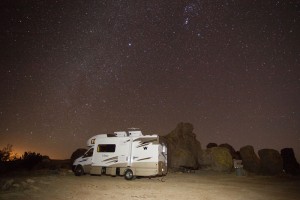
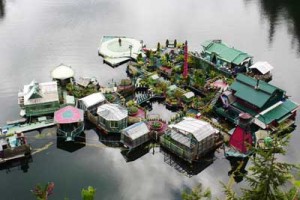






How to find land to camp out at and not get in trouble living on that land that not mine? Thank You for reading my note.
There are millions of acres of national preserved land in the USA and across the world, that you can camp out in for free, and virtually as long as you want, there’s even a search tool on https://www.nps.gov/index.htm if you live in the US.
All of these books are either paid or unpaid.
This collection of books are amazing, where can I get them.